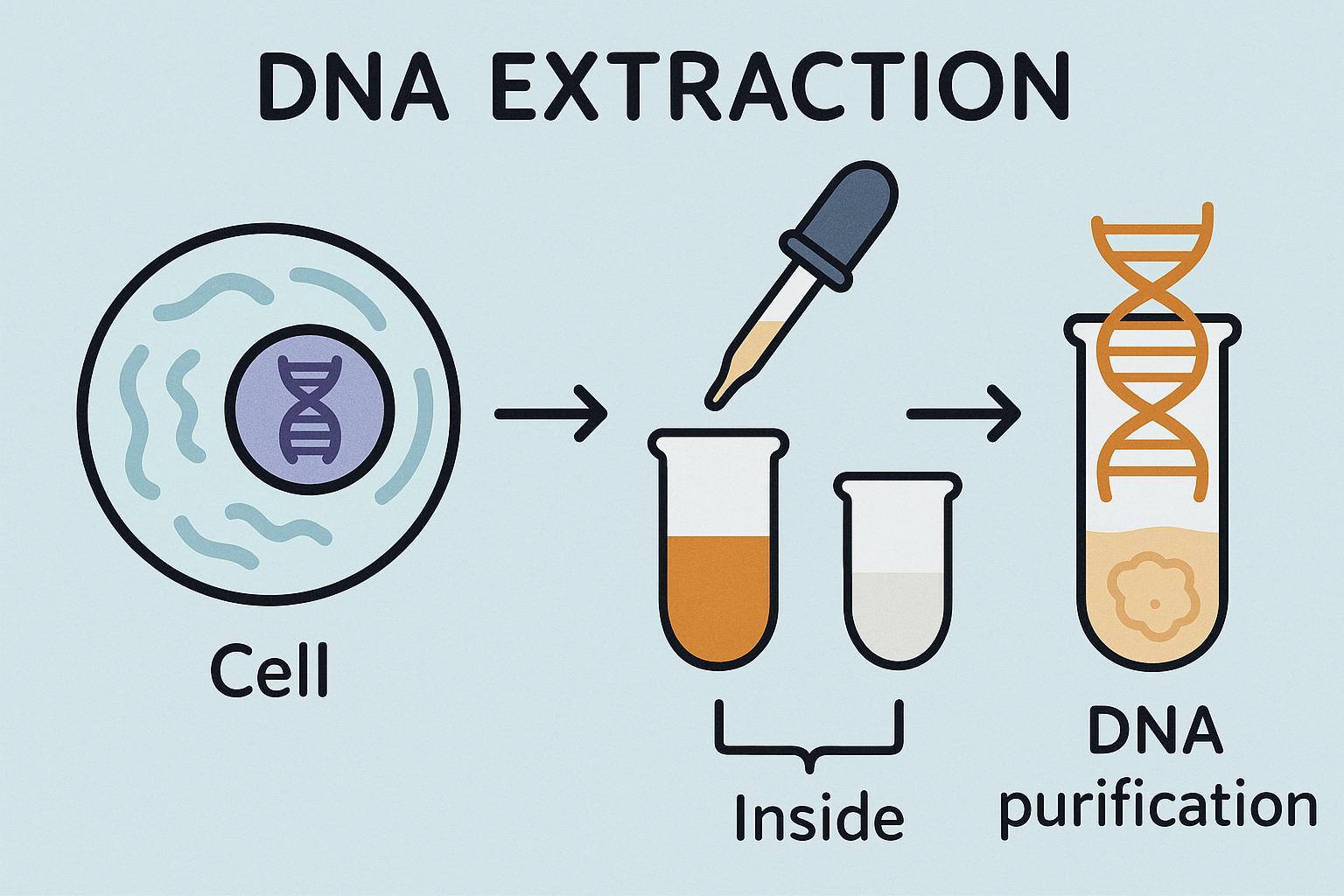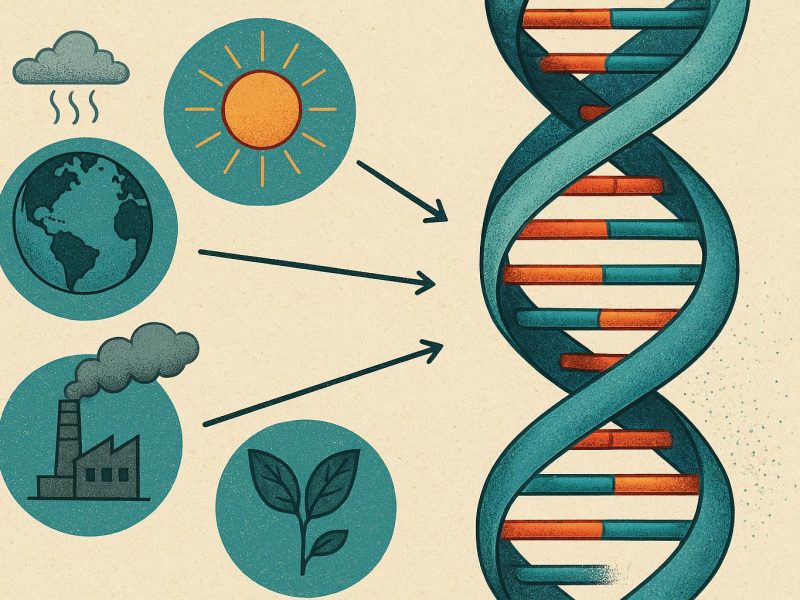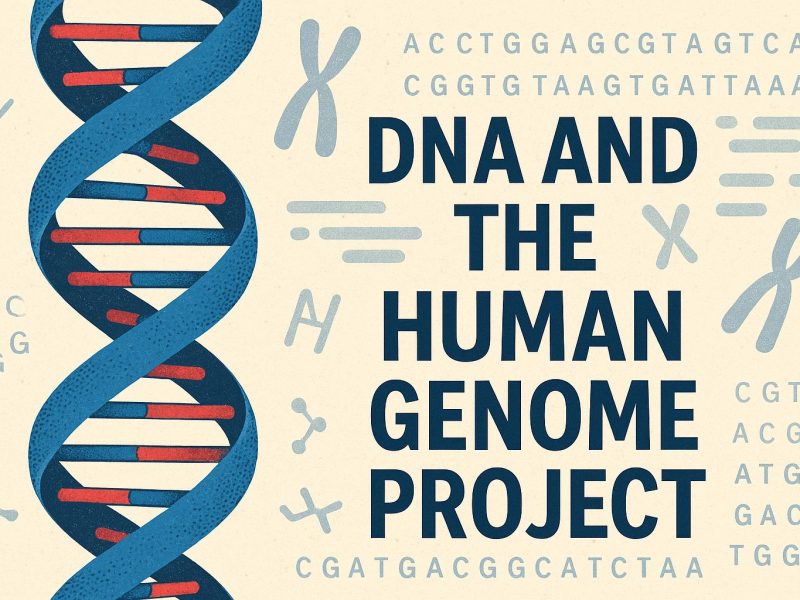Introduction to DNA Extraction
DNA extraction is a fundamental step in molecular biology that isolates deoxyribonucleic acid (DNA) from cells. This process is crucial for various applications, including genetic research, forensic analysis, and biotechnological experimentation. Understanding the methodology behind DNA extraction is essential for professionals working in these fields.
The Importance of DNA Extraction
DNA contains the genetic instructions vital for the growth, development, functioning, and reproduction of all living organisms. Extracting DNA is significant because it allows researchers to study genetic material more effectively, whether it’s for examining inherited diseases, conducting genetic engineering projects, or performing ancestry testing. Unlocking the potential of genetic information can lead to improved agricultural practices, development of medical therapies, and even pave the way for personalized medicine.
Overview of the Extraction Process
The process of DNA extraction involves a series of steps designed to break open the cell, separate DNA from other cellular components, and purify it for analysis. Although various methodologies exist, the basic principles remain consistent across most techniques. Each step is meticulously designed to ensure that DNA obtained is pure and of high quality, thus making it suitable for downstream applications such as sequencing and cloning. While basic protocols are similar, nuances in the steps can be tailored depending on the sample type and the desired yield.
Step 1: Cell Lysis
The initial step, called cell lysis, involves breaking down the cell membrane to release the DNA contained within the cell nucleus. This is typically accomplished using a combination of mechanical disruption and chemical treatments with detergents. The detergents work by dissolving the lipid layers of the cell membrane, aiding in the release of cellular components. Mechanical disruption might include the use of homogenizers or bead mills to physically break tissues and cells, enhancing the effectiveness of chemical agents. Efficiency in this step is crucial as incomplete lysis can result in low DNA yields.
Step 2: Removal of Proteins and Contaminants
Following lysis, proteins and other cellular debris need to be removed. This is achieved using a protease enzyme, which breaks down protein molecules, or via a salt precipitation process. By carefully removing these contaminants, a cleaner DNA sample can be obtained. Protease treatment ensures the breakdown of proteins that could otherwise interfere with enzyme reactions in downstream applications. Salt precipitation helps in precipitating proteins out, while the DNA remains in the solution, a step often requiring precise handling to prevent loss of nucleic acids.
Step 3: Precipitation of DNA
Next, DNA is precipitated from the aqueous solution. Ethanol or isopropanol is added, causing the DNA to precipitate out, as DNA is insoluble in alcohol. This step allows researchers to collect the DNA in a more concentrated form. Precipitation typically occurs at low temperatures, enhancing the efficiency of DNA separation. Centrifugation follows, allowing the DNA to form a pellet at the bottom of the tube, which is then carefully retrieved. Mastery of this step ensures low contamination and high yield, as specks of dust or residual proteins can affect DNA recovery.
Step 4: Purification and Resuspension
In the final step, the precipitated DNA is purified by washing it with alcohol to remove any remaining impurities. It is then resuspended in a suitable buffer solution, such as TE buffer, to stabilize the DNA for storage or further analysis. Proper resuspension is crucial, as it ensures that the DNA strands do not break or degrade, thereby maintaining integrity for subsequent studies. The choice of buffer can vary depending on the purpose; some buffers offer better storage conditions or are tailored to specific analytical techniques.
Challenges and Considerations
Several factors can affect the efficiency of DNA extraction, including the type of cells used, the condition of the sample, and the method of extraction. Balancing these factors is crucial to ensure a successful extraction process. Despite these challenges, advancements in technology continue to refine and improve the methods of DNA extraction, making it more accessible and reliable for various scientific disciplines.
Factors such as sample type—plant, animal, or microbial cells—may necessitate different preparation and extraction protocols. Plant cells, for example, have a rigid cell wall that requires specific enzymes or physical disruption methods for effective lysis. Additionally, sample condition, whether fresh, frozen, or preserved, can influence the integrity and quantity of DNA recovered.
Quality control is essential throughout the extraction process. With the presence of contaminants, such as proteins or RNA, there can be implications on the reliability of subsequent genetic analyses. Therefore, precise adherence to protocol and implementation of thorough purification steps are recommended to enhance DNA quality.
The future of DNA extraction looks promising with the advent of automated systems and kits that streamline the process and minimize human errors. These systems are being increasingly adopted in clinical settings and research laboratories, significantly reducing time and resources required while maintaining high standards of DNA purity and integrity.
Conclusion
Advancements and innovations continue to shape the field of DNA extraction. With the capability to study genetic material in greater depth and on a larger scale than ever before, DNA extraction remains a cornerstone of modern molecular biology and biotechnology. Understanding these principles and the ability to execute them proficiently allows scientists to delve deeper into the mysteries of genetics, paving the way for significant scientific breakthroughs and applications.



